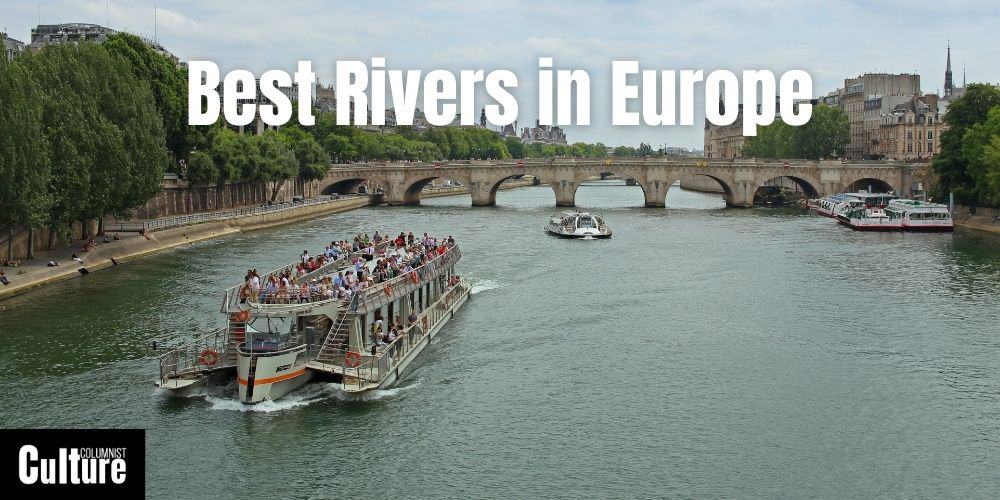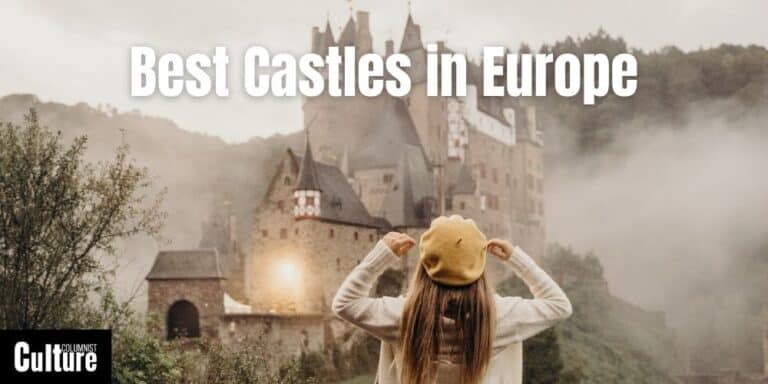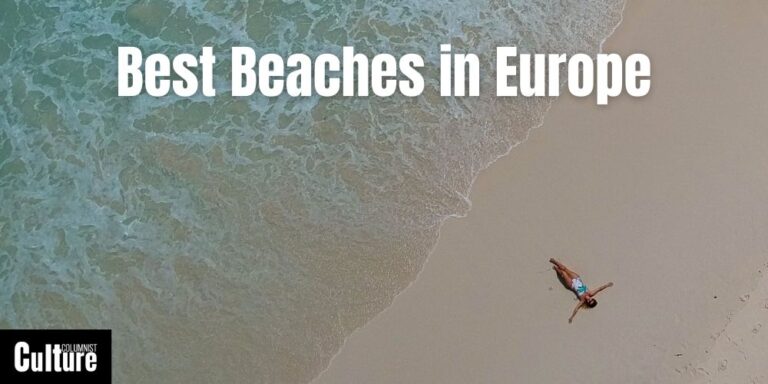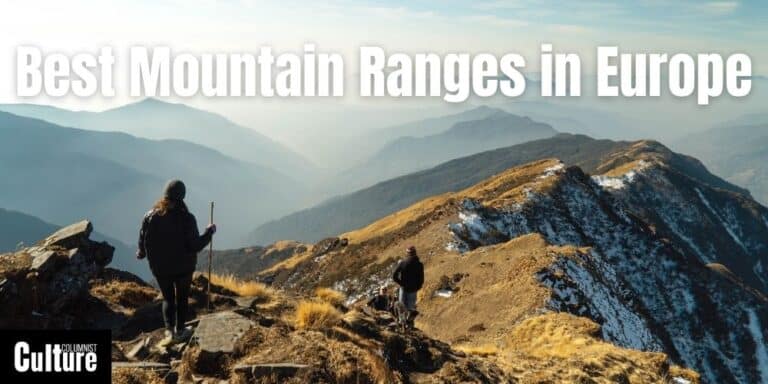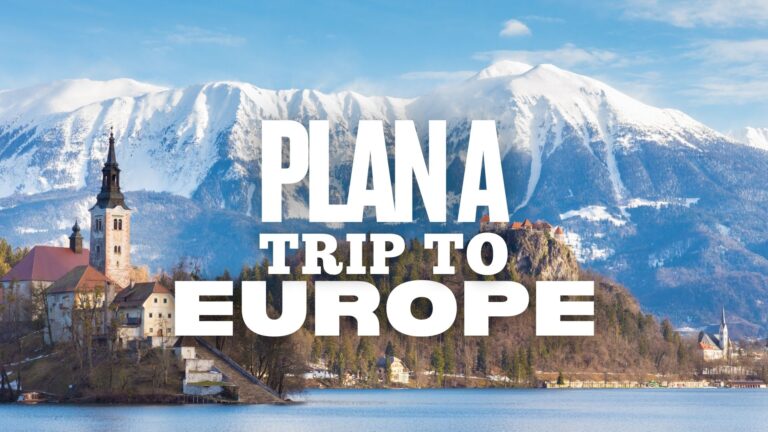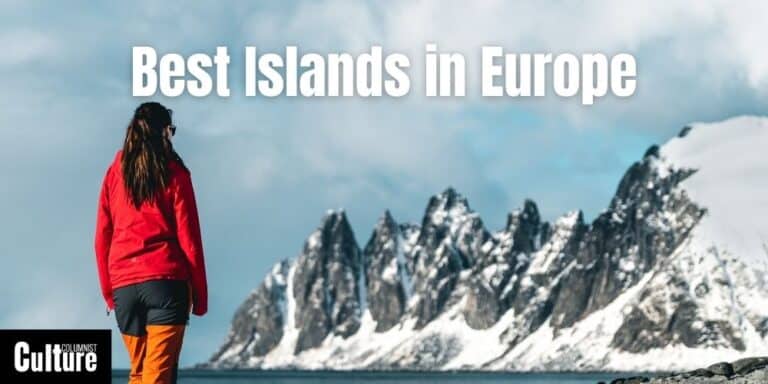The Best Rivers To Cruise And Explore In Europe
Rivers have been the lifeblood of civilizations and the centerpiece of many great cities throughout history. Europe is home to some of the world’s most stunning rivers and has developed a rich tapestry of landscapes and cultures around them.
Whether you’re an adventure junkie keen on river rafting or a nature lover seeking serene landscapes, a river can be the highlight of your whole travel experience. But which European rivers offer the most rewarding experiences in terms of natural beauty and adventure?
The “best” river for your Europe trip depends on what your goals are—such as boating, fishing, a leisurely cruise or hiking alongside the river—as well as absorbing the unique scenic beauty and historical landmarks around it.
Some rivers are conveniently located near major cities, while others require a more extended journey into remote areas. Additionally, the time of year can greatly influence your river experience, affecting everything from water levels to the types of activities available.
However, no matter what your goals are, there are some rivers in Europe that have helped to shape the continent and are worthy of a visit just to see them as landmarks in themselves. With this in mind, below is a curated list of the best rivers in Europe to explore, each unique in what it has to offer.
The Danube River

The Danube River is one of Europe’s major waterways. No other river in the world runs through as many countries as the Danube; it traverses through ten countries, including Germany, Austria, Slovakia, Hungary, Croatia, Serbia, Bulgaria, Romania, Moldova, and Ukraine. It’s popular for river cruising and has been the preferred method of transport for centuries, earning it the nickname “The River of Kings.
The Danube originates in the Black Forest in Germany and flows eastward until it empties into the Black Sea. The river is approximately 2,850 kilometers (1,770 miles) long, making it the second-longest river in Europe. The river flows through various landscapes, including forests, mountains, and plains, and major cities including Vienna, Bratislava, Budapest, and Belgrade.
The river served as the long-standing border of the Roman Empire. In 2021, the Danube Limes, a string of fortified settlements along the river marking the “Frontiers of the Roman Empire,” was inscribed on the UNESCO World Heritage List. Other important sites, including the Wachau Valley in Austria and the Danube Delta in Romania, can be seen from the river.
The Danube is one of the most sailed rivers in Europe, offering various cruising options. Some cruises travel the entire length of the river, lasting up to two weeks, while others focus on a specific section and only last a few days to a week. Popular routes often start from Passau, Germany and go eastward to Budapest, Hungary or even as far as the Black Sea.
The Rhine River

The Rhine River is the twelfth longest river in Europe, flowing through six countries: Switzerland, Liechtenstein, Austria, Germany, France, and the Netherlands. Known for it’s natural beauty and rich history, the river has acted as a link between southern and northern Europe since Roman times and is still traversed each day by more than 1,600 barges.
The Rhine originates in the canton of Graubünden in the Swiss Alps and flows northward into the North Sea. The river spans a length of about 1,230 kilometers (764 miles). The Rhine meanders through a variety of landscapes, including the Swiss Alps and the vine-clad hillsides of Germany’s wine country, as well as major cities including Basel, Strasbourg, Cologne, and Rotterdam.
The river has been a crucial part of European history. The Upper Middle Rhine Valley, a 65 km stretch between Koblenz and Bingen in Germany, is a UNESCO World Heritage Site noted for having over 40 historic castles and an extensive wine region with traditional vineyards.
Rhine River cruises typically start from April to October, with many options focusing on the section between Amsterdam and Basel. Short cruises last four to five days on average, while longer cruises that journey through the entire length of the river can last from twenty to thirty days, depending on how many towns, vineyards, and castles you visit.
The River Main

The River Main is one of Germany’s major rivers, flowing entirely within the country’s borders. It is a primary tributary of the Rhine River and has become increasingly popular as a cruising destination, often as part of a larger Rhine or multi-river European cruise.
The Main originates from two sources: the Red Main and the White Main, which converge near Kulmbach. The river then flows westward for approximately 525 kilometers (326 miles) before merging with the Rhine at Mainz. The river winds through forests, vineyards, and German countryside, as well as passing through several cities, including Würzburg, Frankfurt, and Bamberg.
A cruise along the Main takes you through some of Germany’s best-preserved medieval villages, such as Miltenberg and Wertheim, with their traditional timber-framed houses, narrow cobbled streets and Gothic clock towers. Overlooking the Main River in Aschaffenberg, Schloss Johannisburg is both a castle and a palace and offers an impressive backdrop for your river photography.
Main River cruises often start in Frankfurt but are typically combined with other rivers, unless it’s a day or evening cruise. The most common combination includes the Main with the Rhine and Danube. In 1992, the Main-Danube Canal opened, which connects the Main and Danube Rivers. The canal begins in Bamberg and meets the Danube River in Kelheim, Germany.
The River Seine

The River Seine is one of France’s most famous rivers, flowing entirely within the country. It has garnered a reputation as a prime cruising destination, offering unparalleled views of Paris and the Normandy countryside.
The Seine originates from Source-Seine, in the Langres plateau, flowing north-northwest until it reaches its outlet at the English Channel. With a length of about 777 kilometers (483 miles), the Seine courses through the limestone plateaus of northern France and the city of Paris.
Numerous iconic landmarks like the Eiffel Tower, Notre-Dame Cathedral, and the Louvre can be seen from the river. Further north, the Seine passes through historic areas like Rouen, known for its Gothic architecture, and Le Havre, a UNESCO World Heritage site. The Seine also has historical significance for its role during World War II, especially as a strategic point during the Normandy Invasion.
Most cruises on the Seine last anywhere from a couple of hours to two weeks and generally begin or end in Paris. The cruises often include stops in Normandy, allowing for excursions to historic sites like the D-Day beaches. From Paris, there are also plenty of opportunities to enjoy a short river cruise to take in the city’s famous attractions or enjoy a seated meal, champagne or wine-tastings during your cruise.
The River Thames

The River Thames is the longest river in England and traverses the southern region of the country. The Thames is a popular cruising destination, renowned for its scenic beauty and historic landmarks.
The River Thames originates at Thames Head in Gloucestershire and meanders through several counties before emptying into the North Sea. Covering a length of about 346 kilometers (215 miles), it flows from its source in the Cotswolds and passes through rural farmlands, woodlands, and London, the capital of the United Kingdom.
Famous British landmarks like the Houses of Parliament, Tower Bridge, and the London Eye can be seen from the river, while other towns of historical interest along its banks include Oxford and Windsor. The Tower of London, a UNESCO World Heritage site, sits right on the north bank of the Thames.
Cruising along the Thames offers a range of options, from short sightseeing river boat trips in London to multi-day cruises that take passengers through various historic towns and scenic spots. Typical cruises range from a few hours to a week, depending on the itinerary. Some cruises focus on specific themes, such as history, architecture, or natural beauty, providing an enriching experience for travelers.
The Elbe River

The River Elbe is one of the major rivers in Europe, traversing the countries of the Czech Republic and Germany. In both West and East Germany, the Elbe was considered borderland, so the landscape on both sides of the river remained relatively unspoiled.
The River Elbe’s source is located in the Giant Mountains, Krkonoše, Czech Republic. Covering a length of approximately 1,094 kilometers (680 miles), the Elbe flows through picturesque meadows, steep slopes covered with vineyards and flat plains as it approaches the North Sea. Along the way, it passes the cities of Dresden, Magdeburg, and Hamburg.
Cruising along, you’ll find numerous Bohemian castles dotted on the water’s edge, including Konopiste Castle and Nelahozeves Castle, as well as the Pilnitz Palace and ‘Mary on the Water’ church, both notable landmarks. The towns of Děčín and Ústí nad Labem are noteworthy stops on the Czech side.
Cruises on the River Elbe are available at various stages along the river, with the most popular routes being between Prague and Berlin. They generally range from week-long journeys to more extended voyages that can last up to two weeks. Some cruises will also provide the opportunity for day-trip excursions to discover places such as the gardens of the Sanssouci Palace or the Elbe Sandstone Mountains.
The Loire River

The River Loire is the longest river in France and is entirely contained within the borders of France. It is the only river in Western Europe that has never been canalised, which is why it is called “the last wild river in Europe.”
The River Loire originates in the Massif Central, specifically from the Gerbier de Jonc mountain and empties into the Atlantic Ocean. Spanning a distance of about 1,012 kilometers (629 miles), the river flows through diverse landscapes, ranging from mountains and hills to flat plains, with the Loire Valley being particularly famous. Major cities along the River Loire include Orleans, Tours, and Nantes.
The Loire and it’s surrounding valley are renowned for their châteaux, with 300 castles located along its 175-mile stretch, including the Château de Chaumont, Château de Sully-sur-Loire and Château de Chambord. The region is historically significant for its role in the Hundred Years’ War and as the birthplace of Joan of Arc. A section of the Loire Valley between Sully-sur-Loire and Chalonnes has also been awarded UNESCO World Heritage status since 2000.
River cruises on the Loire commonly range from short-day trips to week-long or ten-day journeys. These cruises often include guided tours of historical landmarks like the famous châteaux and excursions to local vineyards, so it is wise to factor in enough time to enjoy the many riverside attractions.
The Tagus River

The Tagus River, known as the Rio Tejo in Portuguese, is the longest river on the Iberian Peninsula. It is an important source of water and instrumental in shaping the region’s agriculture, history and natural beauty.
The Tagus River originates in the Montes Universales in Spain and empties into the Atlantic Ocean near Lisbon, Portugal. Stretching through Spain and Portugal for approximately 1,007 kilometers (625 miles), the Tagus flows through the mountains of Albarracin, with narrow valleys and deep canyons, to the fertile plains closer to its outlet.
Major cities along the river include Aranjuez and Toledo in Spain, and Santarém and Lisbon in Portugal. The Belém Tower and Jerónimos Monastery in Lisbon are UNESCO World Heritage Sites located at the mouth of the Tagus, while the Almourol Castle and the Vasco Da Gama Bridge are other noteworthy landmarks along the river. The Tagus Valley itself is also renowned for its food and wine.
Cruises and boat trips are mainly focused around the river’s estuary in Lisbon because the river is not fully navigable upstream due to deep gorges and waterfalls, making it difficult for larger boats to pass. However, there are other ways to enjoy the river including kayaking, canoeing and river rafting.
The Douro River

The Douro River is one of the major rivers in the Iberian Peninsula, flowing through Spain and Portugal. The Douro River has gained popularity as a unique cruising destination, primarily for its vineyard-covered terraces, which produce the renowned Port wine.
Originating in the Sierra de Urbión in Spain, the Douro has a length of 897 kilometers (557 miles) and empties into the Atlantic Ocean at Porto, Portugal. The river flows through the rocky terrains of the Douro Valley and the fertile plains of northern Portugal as it approaches the ocean.
The river passes through the cities of Valladolid in Spain and Vila Nova de Gaia and Porto in Portugal. The Alto Douro Wine Region is a UNESCO World Heritage Site, and the river itself has been an important route for wine transportation for centuries. Numerous quintas (wine estates) and historical towns can be viewed along its banks.
Cruises on the Douro River are predominantly available in Portugal, particularly between Porto and the Spanish border. These trips range from day cruises to week-long journeys that delve deep into the wine culture of the region. A typical cruise may last from one to eight days, often including stops at traditional wine estates and cultural sites.
The River Po

The River Po is the longest river in Italy, flowing entirely within its borders and crossing the northern part of the country from west to east. The river was, historically, a vital trade route by the Romans for Baltic amber in the Bronze Age.
The Po originates from the Monte Viso in the Cottian Alps and empties into a delta that hosts rich biodiversity, including a UNESCO Biosphere Reserve. It stretches approximately 652 kilometers (405 miles) from its source in the western Cottian Alps to its outlet into the Adriatic Sea just south of Venice.
The river flows from the upper alpine meadows to the lower, fertile Padan Plains, accommodating a diverse range of plant and animal life, including the pink flamingo, the European otter and the kingfisher. The Po flows through major cities, including Turin, Piacenza, and Ferrara. Ferrara, the City of the Renaissance, and its Po Delta are UNESCO World Heritage Sites.
Cruises on the Po River typically focus on the Veneto and Emilia-Romagna regions and can last from a day to about a week, depending on the package. These trips offer a range of durations, from shorter day trips to week-long excursions that include visits to historical sites and local vineyards.
What are the most famous rivers in Europe?
The Danube is the most famous and second-longest river in Europe, flowing through 10 countries and four capital cities (Vienna, Bratislava, Budapest, and Belgrade). It’s famed for its scenic routes, especially through the Wachau Valley in Austria and the Iron Gates on the border of Romania and Serbia.
The Rhine, the Seine, the Thames and the Volga are other well-known rivers with unique routes that have shaped the scenery and even the history of Europe, providing waterways for exploration, commerce, and transportation. They’ve witnessed centuries of human history and continue to be a vital part of Europe’s landscape.
What is the fastest flowing river in Europe?
The River Corrib in Galway, Ireland, is generally considered to be the fastest flowing river in Europe. Flowing from Lough Corrib through Galway to Galway Bay, the River Corrib is relatively short, approximately 6 kilometers (about 4 miles) in length, but it descends rapidly through a narrow channel, which contributes to its fast flow.
What is the most powerful river in Europe?
The Rhine River in Schaffhausen, Switzerland, is generally considered to be the most powerful waterfall in Europe. The water cascades over a breadth of 150 meters (490 feet) and a height of 23 meters (75 feet), showcasing the river’s power and speed.
The Rhine Falls greatest capacity flow was recorded in 1965 at 1’250’000 litres of water per second. It has an average summer flow of 600,000 litres per second and an average winter flow of approximately 250,000 litres per second, making it one of the biggest waterfalls in Europe.
What is the biggest dam in Europe?
The Grande Dixence Dam in Switzerland is the biggest dam in Europe. Standing at an impressive height of 285 meters (935 feet), it’s not only the tallest gravity dam in Europe but also one of the tallest in the world. The dam is located in the canton of Valais and creates the Lac des Dix, one of the largest artificial lakes in Europe.
The artificial lake is a recreational hotspot similar to natural lakes in Europe, offering activities like boating, fishing, and swimming. The Grande Dixence dam is open to the public from mid-June to the end of September. Four guided tours inside the wall are organised for tourists every day.
Which European river is the most scenic?
The Rhine is often considered the most scenic river in Europe. The Upper Middle Rhine Valley, also known as the Rhine Gorge, is a UNESCO World Heritage Site and is famed for its stunning views, steep vineyard-covered slopes, picturesque villages, medieval castles, and the Lorelei Rock.
As the river winds its way through this dramatic landscape of the Swiss Alps into Germany, it creates a series of bends and curves that offer ever-changing views around every corner. The Rhine Valley’s beauty has inspired artists, poets, and musicians for centuries, contributing to its reputation as one of the most scenic and culturally significant valleys in Europe.

